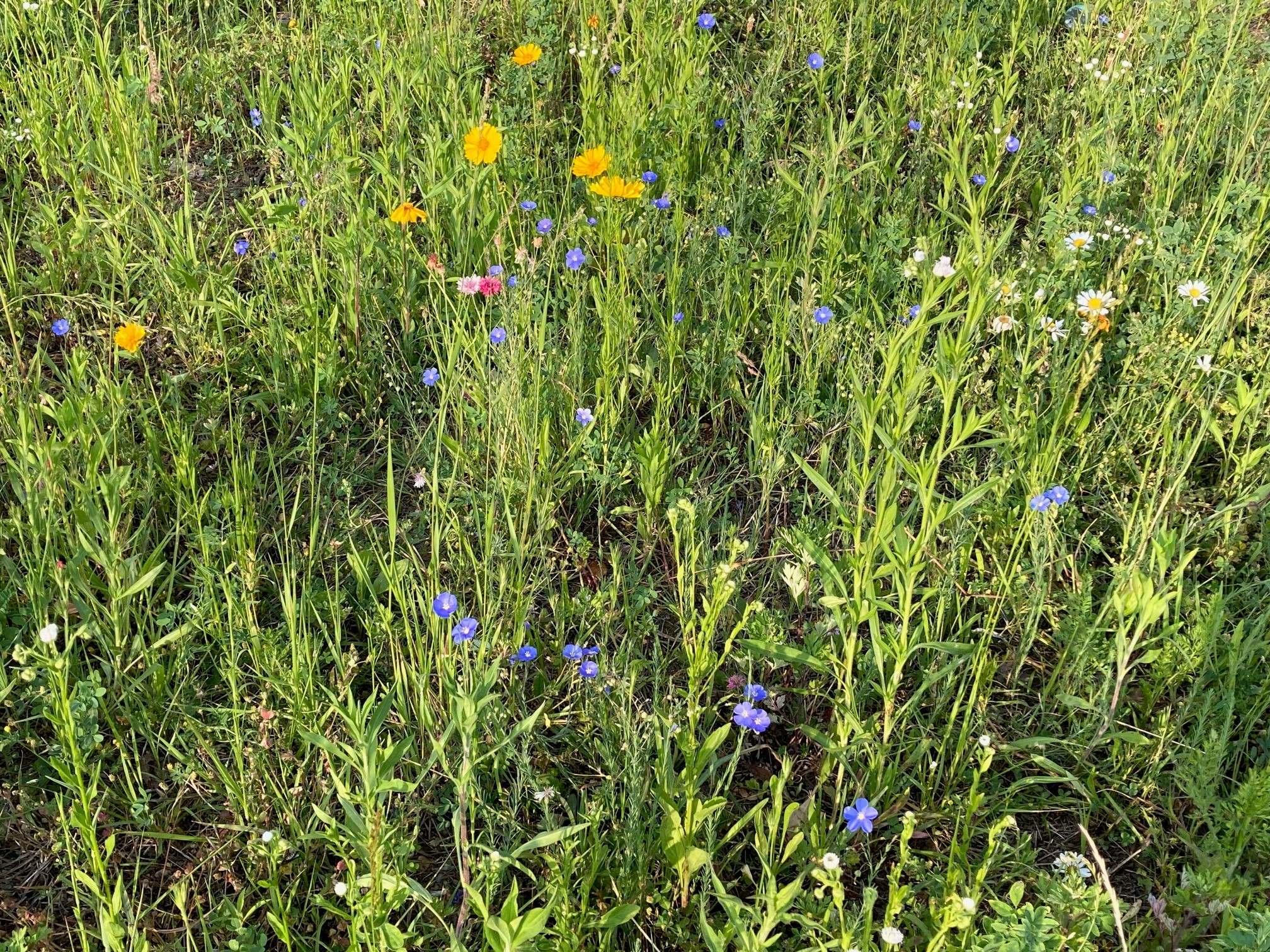UMB Installs New Pollinator-Friendly Meadow and Gardens
June 12, 2023 Olivia Rosser
These spaces provide beautiful color and rich environments for humans and pollinators alike to enjoy.
This past spring, the University of Maryland, Baltimore (UMB) has been busy cultivating new green spaces with some formidable partners … bees. In addition to the upcoming installation of beehives on the sixth-floor green roof of Health Sciences Research Facility III (HSRF III), the UMB Office of Sustainability has worked to establish pollinator-friendly spaces throughout campus. Pollinators include bees, butterflies, moths, birds, bats, and other mammals that are vital to our ecosystem and food supply. They visit flowering plants and transport pollen from bloom to bloom as they move. The distribution of pollen grains between flowers is how fruit, vegetables, seeds, and plants develop. Some plants are wind-pollinated, but animals and insects pollinate a third of our food sources.
Honeybee populations have been observed to forage for food by flying more than 4 miles away from their hives. In a city landscape, it can be difficult for bees and other pollinators to find the resources they need to survive. Creating habitats that nourish our bees and attract pollinators at UMB is essential for their success. Perennial and native plants are preferred for pollinators because they produce ample pollen and nectar, flowering over an extended period of time. The foliage and flowers of these plants also provide food and shelter for beneficial insect populations. UMB University Architect Anthony Consoli was a champion for creating these gardens, which he finds valuable for all species. "Pollinator gardens and wildflower meadows provide many benefits to humans as well: visual beauty through nature's own colorful flower art; the sounds of singing birds, particularly in the mornings; and reduced state monies spent on landscape maintenance costs," Consoli says.
The new pollinator garden space can be found outside HSRF II along Penn Street, while the wildflower patch occupies the lot along West Lexington Street behind the post office between Pearl and Greene streets. This site will be the location for the new School of Social Work. Another campus wildflower meadow to visit is located along the south side of Medical School Teaching Facility (MSTF). The habitats look different from the short, maintained lawns people are used to seeing. One issue with popularizing pollinator habitats like this wildflower field is that they can be mistaken for weeds. The UMB Office of Sustainability has created new signage to spread public awareness about the significant role of these habitats for our pollinator friends. Some plants you might see include:
- Bee Balm (Monarda didyma “Jacob Cline”)
-
Cardinal Flower (Lobelia cardinalis)
-
Coral Bells (Heuchera “Plum Pudding”)
-
Ironweed (Vernonia fasciculata)
-
Pennsylvania Sedge (Carex pensylvanica)
-
Switchgrass (Pancium virgatum)
-
Virginia Bluebells (Mertensia virginica)
-
Virginia Sweetspire (Itea virginica)
-
Wild Ginger (Asarum canadense)
-
Witch Hazel (Hamamelis vernalis)
Next time you are near these pollinator spaces, take time to see what plants you can identify. These spaces provide beautiful color and rich environments for humans and pollinators alike to enjoy. Notice which insect and bird visitors are hard at work. You may feel inspired to add a few pollinator-friendly plants to your space. UMB is doing the work to support a healthy ecosystem and create beautiful landscapes for the pollinators and public to enjoy. Spread the word about the importance of native plants for our local pollinators and pardon the flowering “weeds” while UMB feeds the bees!